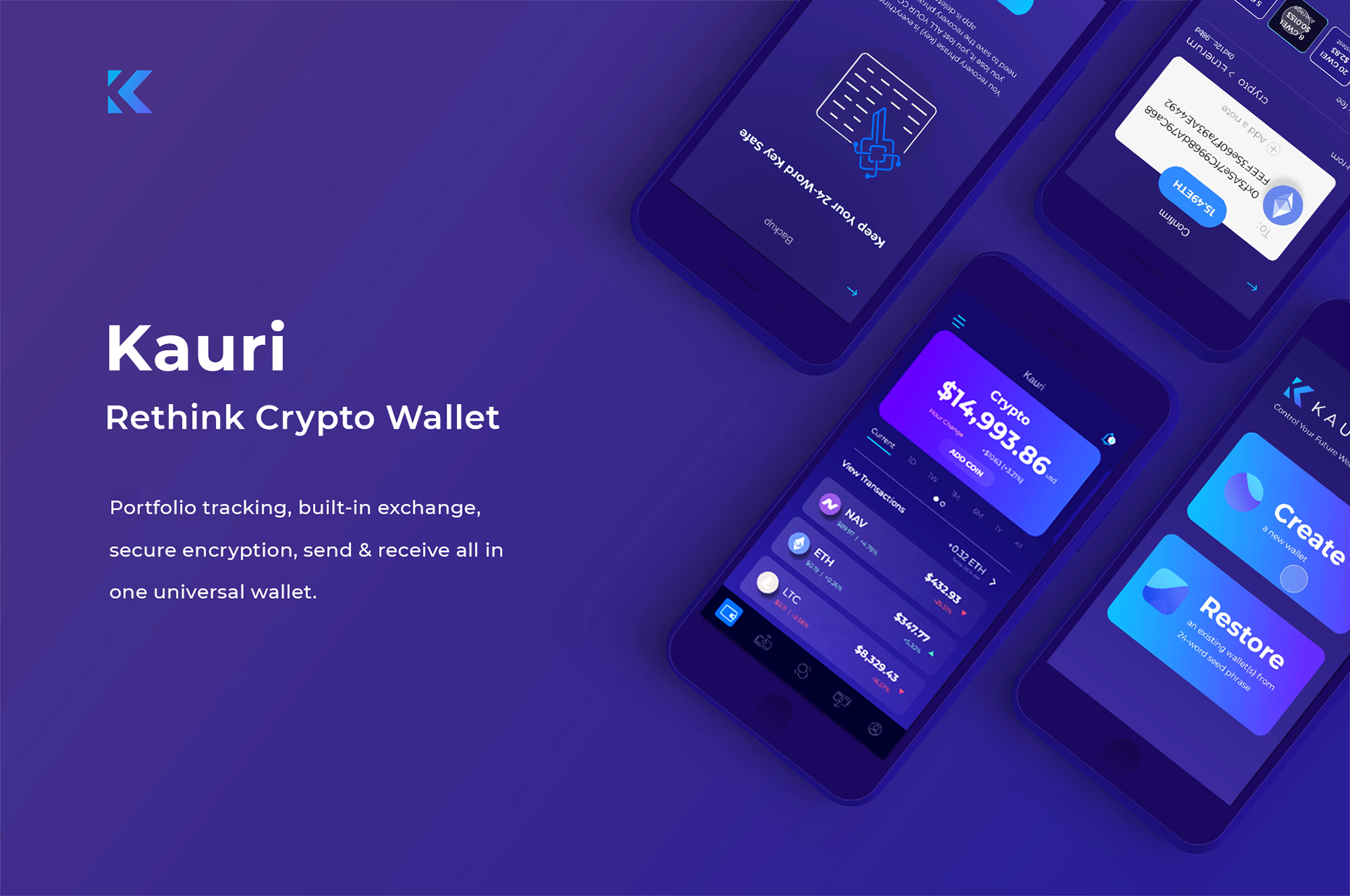

Aiming to be the next NavPay, the objective of Kauri was to re-envision and enhance the crypto wallet user experience. Blockchain is a game-changing tech, poised to reshape the economy and social system. However, over time it has developed a complex tone of voice, so we are striving to simplify crypto in line with the decentralized principle - crypto's future is for everyone. Leverage design thinking as a problem-solving approach throughout the UX process.
The self-responsibility wallet provides a secure user experience but is not intentionally designed for ease of use. On the other hand, online buy/sell coin platforms are designed to be visually appealing and effortless to set up, but ultimately, you don't have full control over your coins. So, the question arises: When and how can we achieve the best of both worlds?
There is a pain point in the crypto wallet app market, with a lack of comprehensive solutions that offer multiple wallet support, integrated portfolio tracking, customized news alerts, a convenient built-in exchange, and user-friendly backup processes.
Design thinking is an approach that consistently puts the user front and center while tackling challenges. Following the typical five iterative steps: empathize, define, ideate, prototype, and test. This really helps Wallet concept development to showcase our comprehensive design thinking process in greater depth.
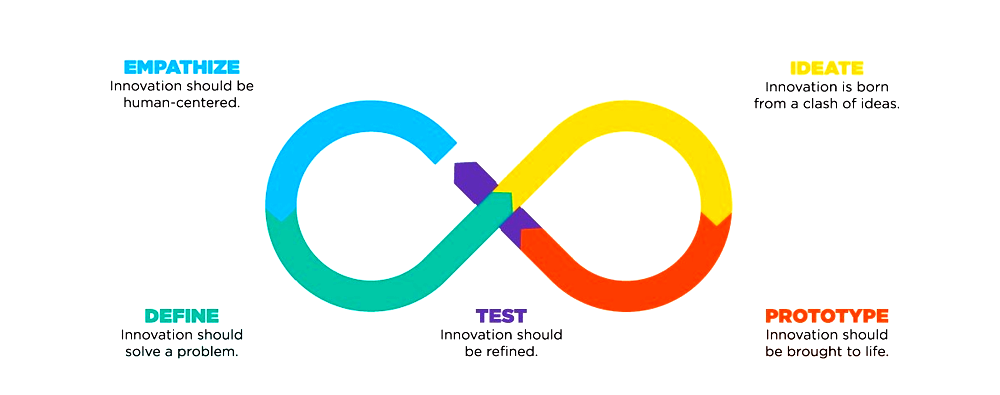
We've got two main users in mind for our research, a primary persona using the wallet users, and a secondary, crypto traders. During the interviews, we took a moment to inquire about their background and aimed to understand their thought process and expectations. We asked what they do with crypto, what past experiences they've encountered, how they got into it, why they keep using it, their thought process, what's their biggest fear, how they might try out our product, or what possibilities exist to turn traders into wallet users.
Empathy boils down to grasping and resonating with others' emotions. It plays a significant role in user experience design since we're crafting solutions for our users and need to comprehend their requirements. To get a handle on this wallet project, we chatted with various crypto users to learn how they presently use and manage their wallets.
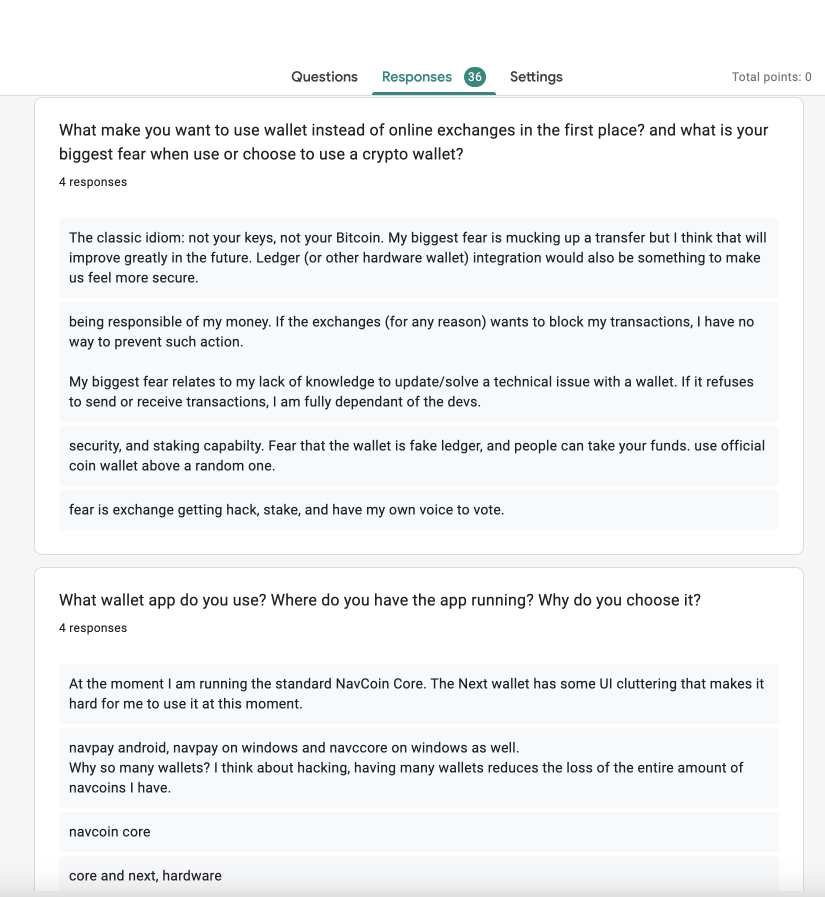
• The majority hold 5 or more coins in their wallets, and they tend to favor having multiple wallets within one app. This allows them to keep their assets separate from their family or use it like bank apps by maintaining various accounts for distinct purposes.
• Apart from the primary wallet app, crypto holders rely on specialized third-party portfolio tracking apps (such as Blockfolio or Delta) for detailed analysis and visuals, enabling them to engage effortlessly with the charts and make informed trading choices.
• Keeping up to date with the customized news/report alerts tied to their held coins before diving into trading decisions.
• Discovered the built-in exchange feature to be quite handy, since the majority of transactions are carried out for trading purposes rather than paying for goods. For example, swapping for higher-value cryptos or earning staking rewards.
• Lite users aren't happy with the existing backup process on the competitor's app, as it's unconventional and the guidance is hard to follow.
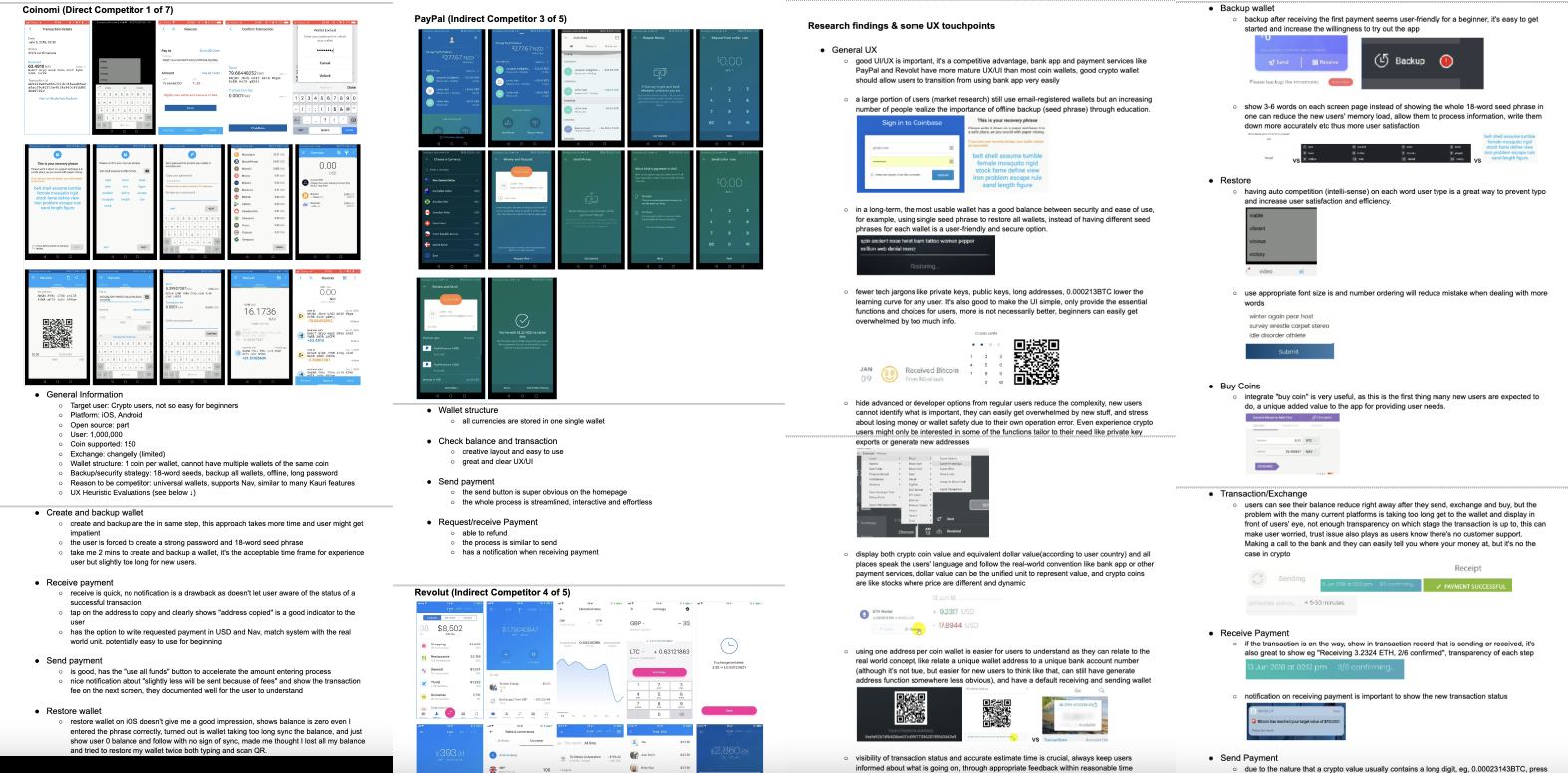
We also scoped out competitors like Coinomi, Exodus, and Coinbase - some of the most favored wallets among crypto investors.
From competitor analysis, it was quite evident that most crypto wallet apps currently cater to people already familiar with crypto, willing to go the extra mile to secure their private keys and maintain full control over their assets.
However, this approach restricts the trading functionality, causing frustration for crypto users, as it becomes a complex process if they want to swap one coin for another to maximize their investment returns using the existing workflow. Our goal was to craft a tool that enables crypto holders to make trading decisions and long-term commitments without relying on third-party apps, and offer added value for existing wallet users to switch over to Kauri.
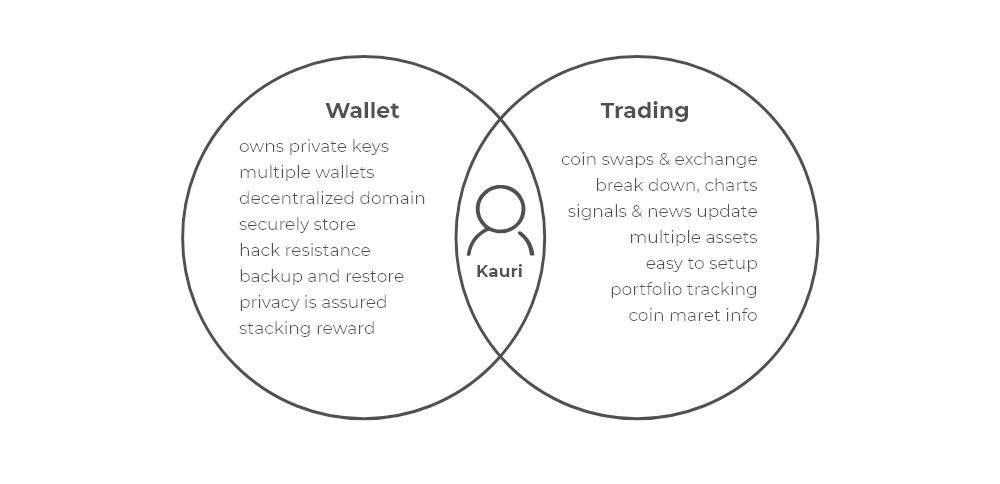

Now it was time for the fun part: brainstorming solutions to the issue. During our empathy phase, we discovered that most crypto users hold multiple coins, and our multi-wallet, multi-asset feature caters to their need for wallet management, similar to how bank apps operate. This approach provides users with a familiar experience.
As for crypto traders, we realized that incorporating a built-in exchange, charts, graphs, and other trading options would make our app not only functionally comparable but also more secure than online exchanges. So, we decided to move forward with designing the app. Pen and paper are my go-tos, as it's a simple and highly efficient method to user flows and UI sketches.
~breathe~
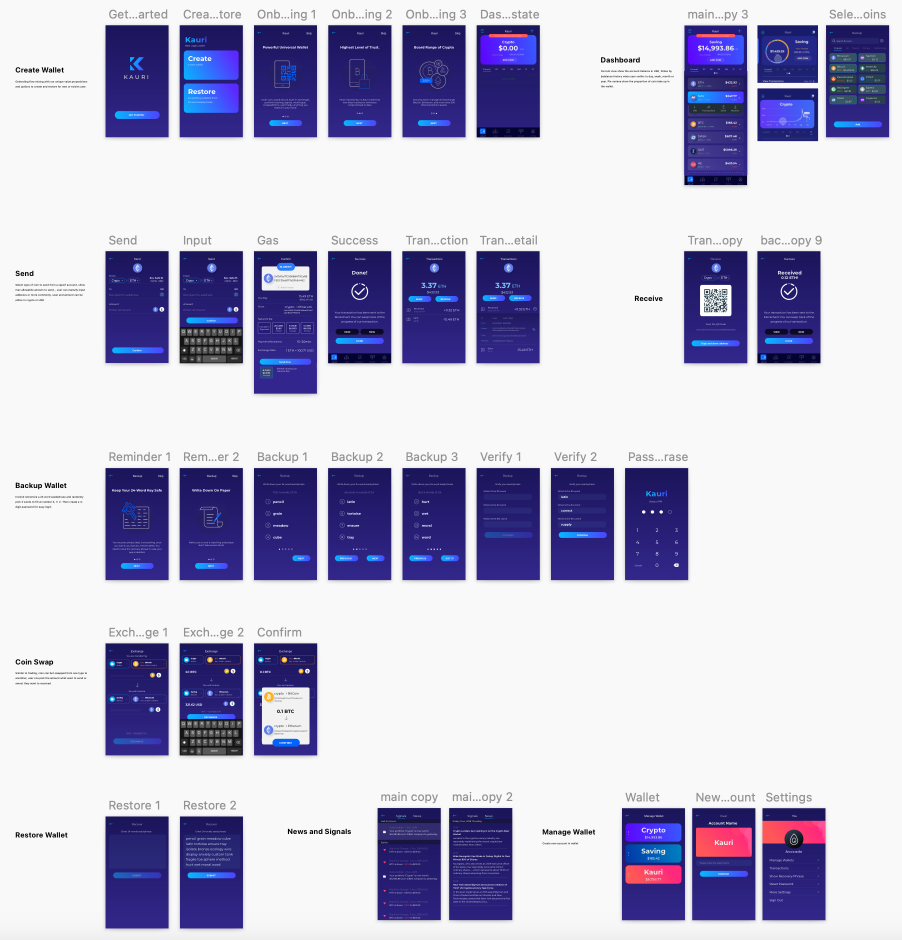
The concept that got us really pumped was the integrated portfolio tracking for the multi-asset wallet. It boasts a familiar interface, similar to a portfolio tool with graphs and figures that crypto investors value, all powered by the robust atomic exchange and top-notch encryption behind the scenes. This essentially enables crypto holders to make exchange decisions on the spot, without having to leave the wallet. For instance, if you see Bitcoin taking a more bullish turn than Ethereum, simply hit exchange and you're good to go in seconds – a massive time-saver. In contrast, most wallet apps only let you send coins to online exchanges after going through the lengthy process of logging in, enabling 2FA, waiting for exchange results, and then transferring the new coins back to the wallet. It feels like an unnecessary loop that deters people from using the wallet app to begin with.
💡 Tip: Refresh this page if you come across the message "This video is unavailable"

Taking one step further, interactive Prototypes are awesome because they offer cost-effective and speedy methods to test whether your concept will truly function before committing time and dev resources to building it. I crafted the static screens using Sketch and employed Principle for more lifelike and intuitive transitions and scrolling. It's excellent for creating functional, interactive prototypes that enable us to better showcase the key interactions. I have made a full-length gallery of interaction demos below, please enjoy and I hope you like them!
Conventional wallets often build like static bank accounts with primary functions like holding value and handling transactions, as well as serving as a secure asset vault. This concept can be carried over to crypto wallets, but with an added twist for many investors looking for its high-return, high-risk potential. By incorporating tracking tools, exchange options, and personalized notifications that promptly display their coins' performance, Kauri can become more of a trading-wallet hybrid, effectively assisting users in cutting losses and securing wins.
Backing up is a vital yet unconventional step when using crypto wallets. Users are prompted to jot down and securely store a secret 24-word random phrase. This phrase is the master key for all private keys; losing it means losing all their assets forever. However, asking users to memorize a full screen of 24 random words before they can even use the wallet is a tall order. If they don't understand the importance, they simply give up engaging.
So, unlike most wallets, Kauri swiftly guides users to the main interface, allowing them to set up, modify profiles, and read news without interruption. Once they dig deeper and opt to buy, send, or receive coins, a red reminder appears, and the screen dims as a way to nudge users. They can still use the app, albeit uncomfortably, but to alleviate the visual discomfort, they must back up.
Kauri also enhances the backup experience by displaying 4 words at a time, clearly numbered, catering to human short-term memory. Finally, users verify by recalling 3 random words from the phrase they memorized. This process has been tested and proves to be more engaging for users.